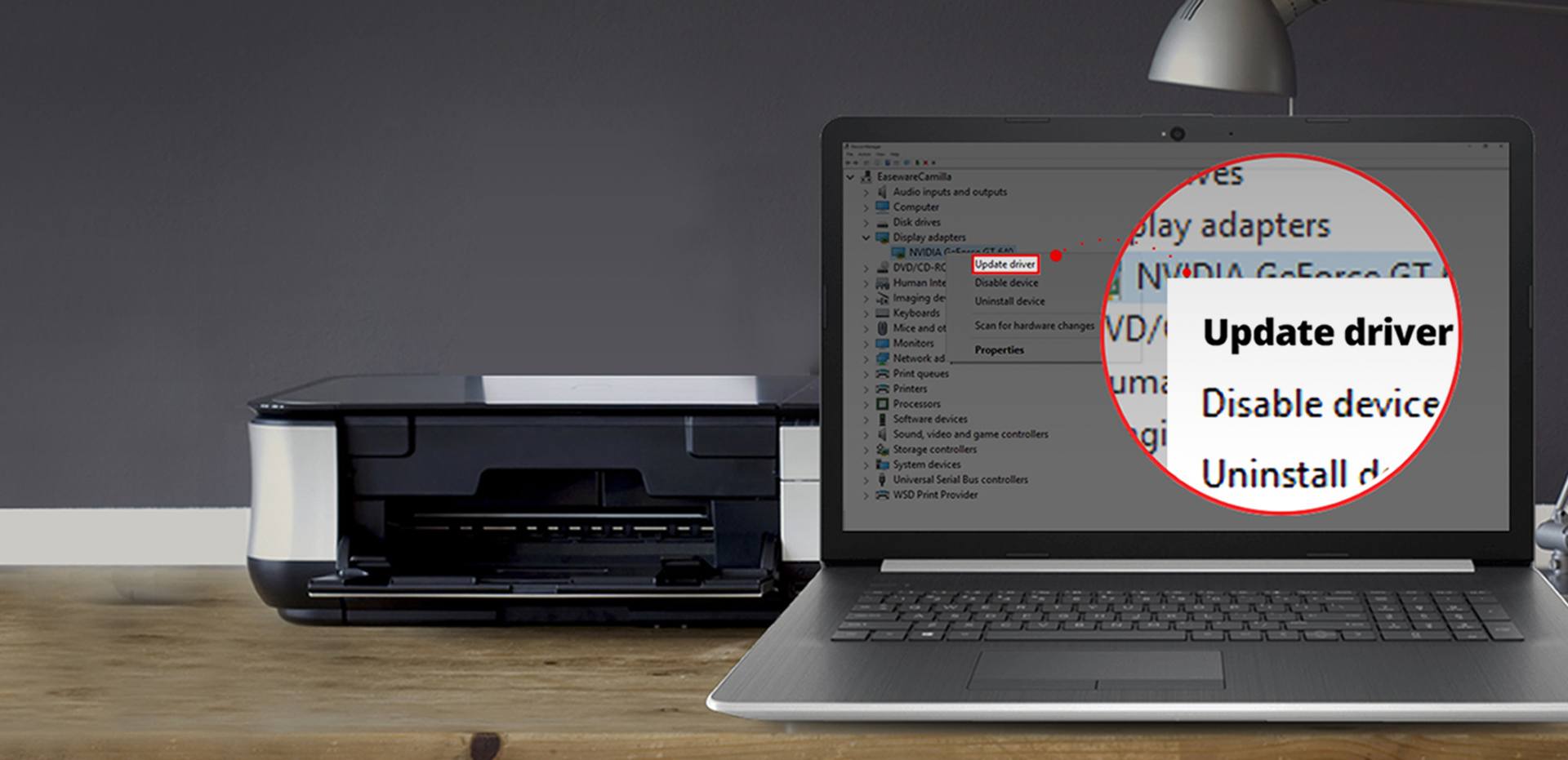Jump ahead to the section you’re interested in
- How to identify missing or malfunctioning drivers with Windows Device Manager
- How to identify (some) outdated drivers with Windows Device Manager
- How to update a driver with Windows Device Manager
- How to reinstall a driver with Windows Device Manager
- What Windows Device Manager DOESN’T do
- Device Manager vs Driver Easy
- How to get Driver Easy
Note that the Windows Device Manager screenshots in these instructions are from Windows 11, but the instructions themselves will work in Windows 10, 8 and 7 too.
How to identify missing or malfunctioning drivers with Windows Device Manager
To see which of your devices have a missing or malfunctioning driver:
On your keyboard, press the Windows logo key
 and R at the same time to invoke the Run box.
and R at the same time to invoke the Run box.Type devmgmt.msc and click OK.

(There are other ways to open Device Manager; it changes depending on your version of Windows. But the above method works for all versions of Windows, including Windows 11, 10 and 7.)
Expand a category (e.g. Display Adapters) to see the devices in that category. If you see a yellow triangle or question mark next to a device, Windows has detected that it has a missing or malfunctioning driver.

If you see this yellow mark, you can try to update or reinstall the driver as described later on this page.
How to identify (some) outdated drivers with Windows Device Manager
Identifying outdated drivers with Device Manager is a very tedious process. You can’t tell, just by looking at the device in Device Manager, if its driver is out of date. You have to actually try to update the driver, as described below. If Windows thinks the driver is out of date, it will update it for you; if not, it will tell you you already have the latest driver.
IMPORTANT: As discussed later on this page, Windows Device Manager doesn’t always detect outdated drivers. Nor does it always give you the latest available version if you update a driver. If you want to be sure you have the latest available version of a driver, you need to source the driver directly from the device manufacturer or use a tool like ours, called Driver Easy, to do it automatically.

How to update a driver with Windows Device Manager
To update a driver in Device Manager (or to see if Windows thinks it needs updating):
On your keyboard, press the Windows logo key
 and R at the same time to invoke the Run box.
and R at the same time to invoke the Run box.Type devmgmt.msc and click OK.

(There are other ways to open Device Manager; it changes depending on your version of Windows. But the above method works for all versions of Windows, including Windows 11, 10 and 7.)
Expand a category (e.g. Display Adapters) to see the devices in that category.
Right-click the device whose driver you’d like to update, and select Update Driver.
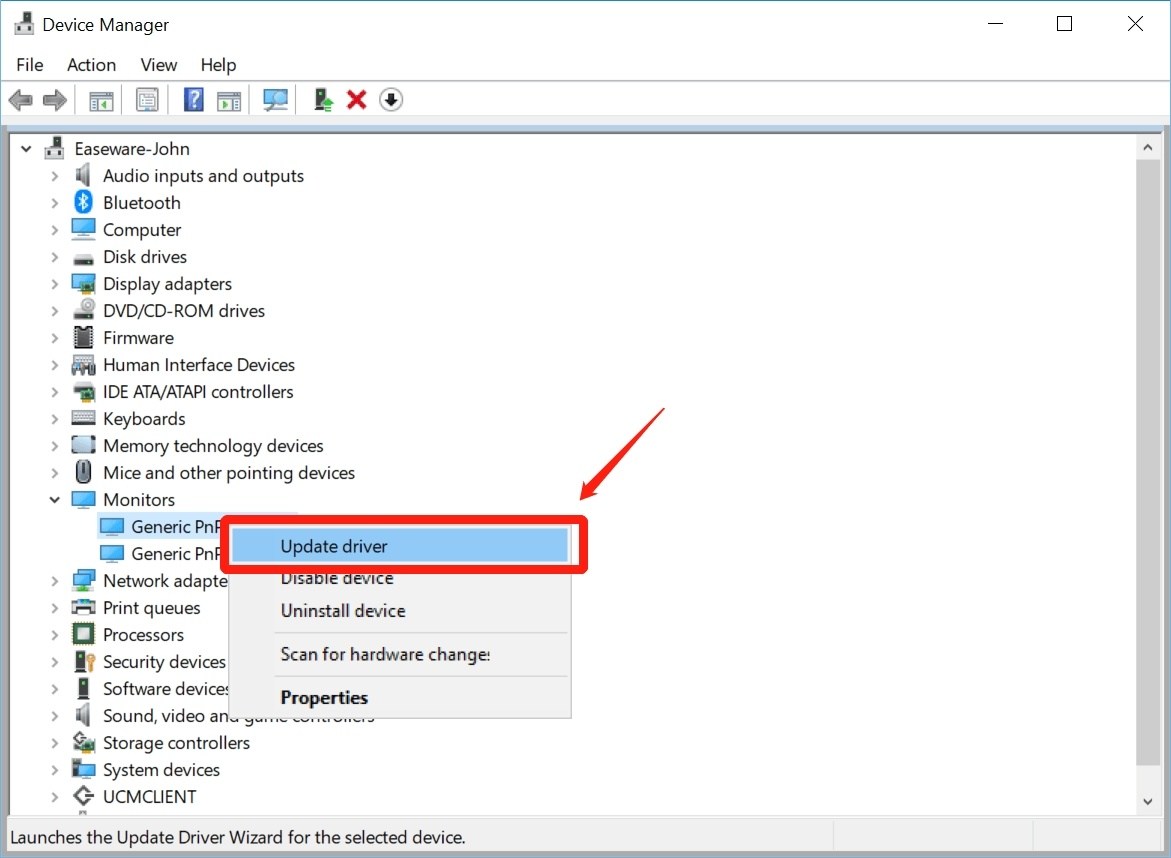
Select Search automatically for updated driver software.
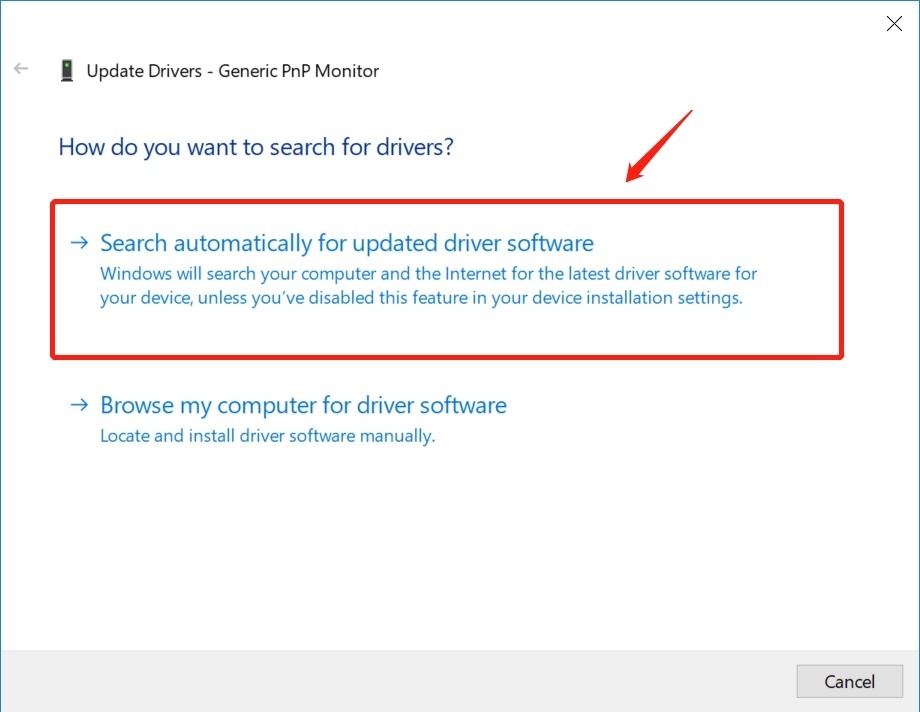
IMPORTANT: As discussed later on this page, Windows Device Manager doesn’t always detect outdated drivers. Nor does it always give you the latest available version if you update a driver. If you want to be sure you have the latest available version of a driver, you need to source the driver directly from the manufacturer or use a tool like ours, called Driver Easy, to do it automatically.
How to reinstall a driver with Windows Device manager
To reinstall a device’s driver in Windows Device Manager:
On your keyboard, press the Windows logo key
 and R at the same time to invoke the Run box.
and R at the same time to invoke the Run box.Type devmgmt.msc and click OK.

(There are other ways to open Device Manager; it changes depending on your version of Windows. But the above method works for all versions of Windows, including Windows 11, 10 and 7.)
Expand a category to see the devices in that category. Right-click the device whose driver you’d like to reinstall, and select Uninstall.
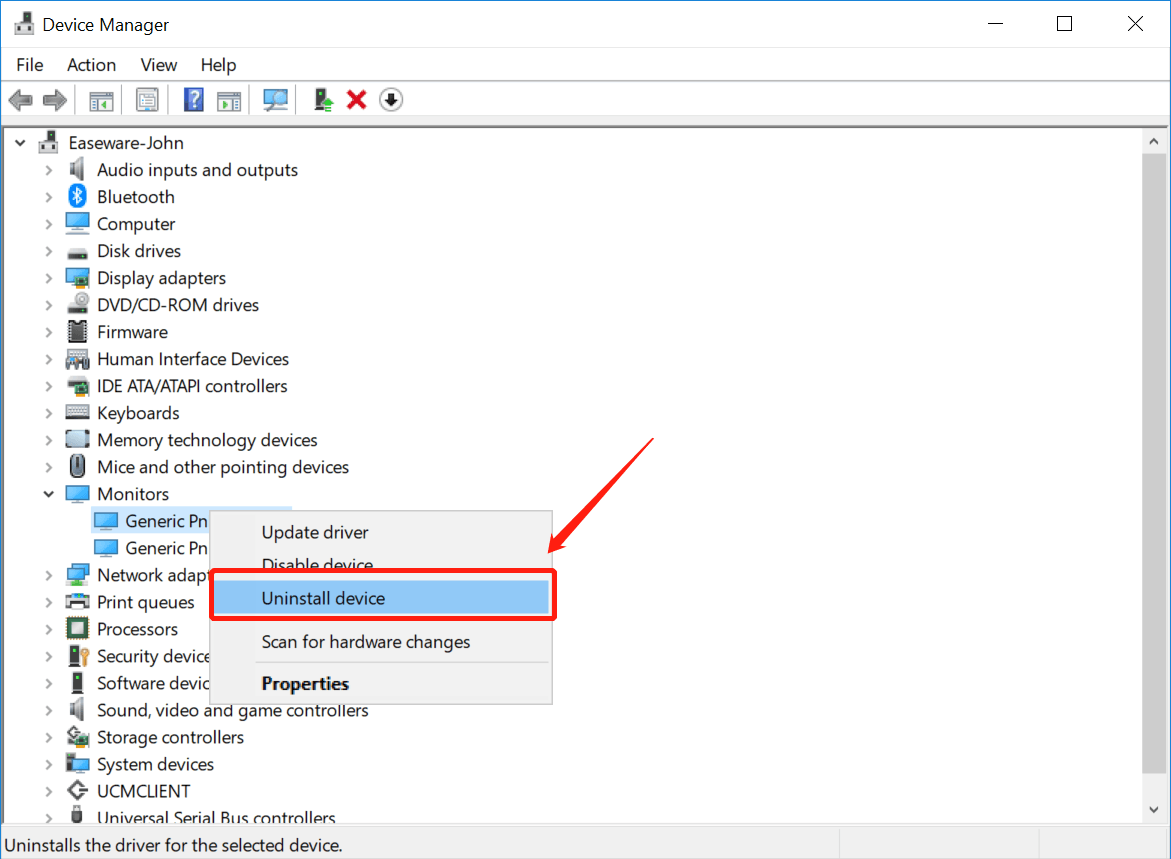
Restart your PC.
Windows will attempt to reinstall the driver.
IMPORTANT: As discussed below, reinstalling a driver with Windows Device Manager doesn’t necessarily give you the latest available version of that driver. If you want to be sure you have the latest available version of a driver, you need to source the driver directly from the manufacturer or use a tool like ours, called Driver Easy, to do it automatically.
What Windows Device Manager DOESN’T do
Windows Device Manager doesn’t always detect outdated drivers. Particularly in Windows 10/11. That’s because it categorizes driver updates as either ‘critical’, ‘automatic’ or ‘optional’, and it doesn’t usually concern itself with the ‘optional’ ones. So long as you have the necessary ‘critical’ and ‘automatic’ updates, it’s happy. It won’t, for example, install a new ‘optional’ update, if it already has an old ‘critical’ update installed. Here’s a quote from Microsoft itself:
Windows offers the best matching driver, which is not necessarily the most recent. The driver selection process considers hardware ID, date/version, and critical/automatic/optional category. Windows prioritizes critical or automatic drivers highest. If a matching driver is not found, WU looks next for optional drivers. As a result, an older critical driver of otherwise equal value takes precedence over a newer optional driver.
But all driver updates are important, even when Windows calls them ‘optional’. If they weren’t, the hardware manufacturers wouldn’t go to all the trouble of coding and releasing them.
Sometimes these ‘optional’ updates include just a new, nice-to-have feature, and you can arguably do without that. But sometimes it’s an important bug fix – perhaps the old driver is causing your device to stop working or your computer to crash. Windows often categorizes these updates as ‘Critical’, but definitely not always.
Other times, it’s not Device Manager’s fault at all. It’s just that the device manufacturer has failed to include the driver you need in the latest Windows Update. Watch this video for more information on how this happens:
Issues you’ll encounter when Windows Device Manager won’t update a device driver
Whether it’s a Microsoft issue or a device manufacturer issue, if Windows doesn’t detect that your device drivers are out of date then:
If you try to update a device’s driver as described above, Windows Device Manager will tell you the driver is already up to date, even though it’s not; and
You could be missing out on important device functionality, and you may be suffering through completely unnecessary computer issues (e.g. computer crashes or very slow performance).

What to do when Windows Device Manager won’t update a device driver
If you’re unable to update a device driver in Windows Device Manager, Microsoft says:
If Windows doesn’t find a new driver, you can try looking for one on the device manufacturer’s website and follow their instructions.
But to do this, you’ll need to know the brand and model of the device, as well as your exact operating system and whether it’s 32 or 64 bit. Then you have to find the manufacturer’s driver download page, find the correct driver, and check that it’s newer than the one you already have installed. Then, of course, you have to download and install the driver – quite often a complex process, in itself.
Obviously this takes a lot of time, but it also requires quite a bit of technical expertise. If you do something wrong, your device – or even your entire computer – may just stop working.
If you don’t have the time, skills or confidence to manually install drivers, you can use our tool, Driver Easy, to update your drivers automatically. It will automatically detect all the devices on (or connected to) your computer that have outdated drivers, and you can then update them all with one click.
Watch Driver Easy in action:
It’s not just easier, either. Driver Easy Pro also reduces your risk. It will automatically recognize your system and all your devices, and install the latest correct drivers for you – direct from the manufacturer, and certified safe and stable. You don’t need to know exactly what system your computer is running, you don’t need to risk downloading and installing the wrong drivers, and you don’t need to worry about making a mistake when installing.
You just click Scan Now, then Update All.
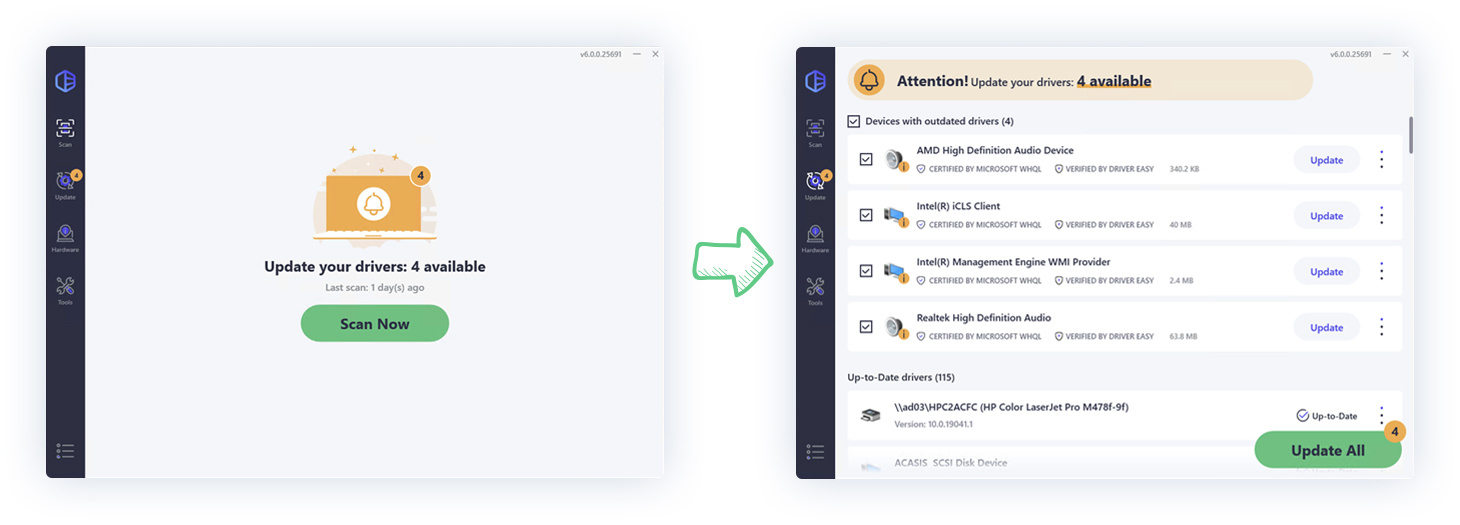
Windows Device Manager vs Driver Easy Pro
Driver Easy Pro works differently from Windows Device Manager:
| Windows Device Manager | Driver Easy | |
|---|---|---|
| Installs all ‘critical’, ‘automatic’ and ‘optional’ driver updates |  |
 |
| Gets the latest drivers directly from the manufacturer as soon as they’re released |  |
 |
| 1 click to identify all devices with outdated drivers |  |
 |
| 1 click to automatically update all out of date drivers |  |
 |
| Ensures all your drivers are always truly up to date |  |
 |
| Automatically creates a Windows restore point in case the new driver causes issues |  |
 |
| Includes free computer technical support |  |
 |
Try Driver Easy for free
If you want the certainty of knowing your device drivers are always up to date (and not just sometimes up to date, which is all you get from Windows Device Manager), and you don’t have the time, patience or computer skills to continually update them manually, give Driver Easy a try for free.
Sign up for our 7-day free trial, and you can experience the full benefits of Driver Easy Pro at no cost. It will identify all your missing or outdated drivers and allow you to download and install them automatically with just one click.

Questions?
If you still have questions about updating your device drivers, or you’d like to learn more about doing it automatically with Driver Easy, please get in touch. We’d be happy to help.







